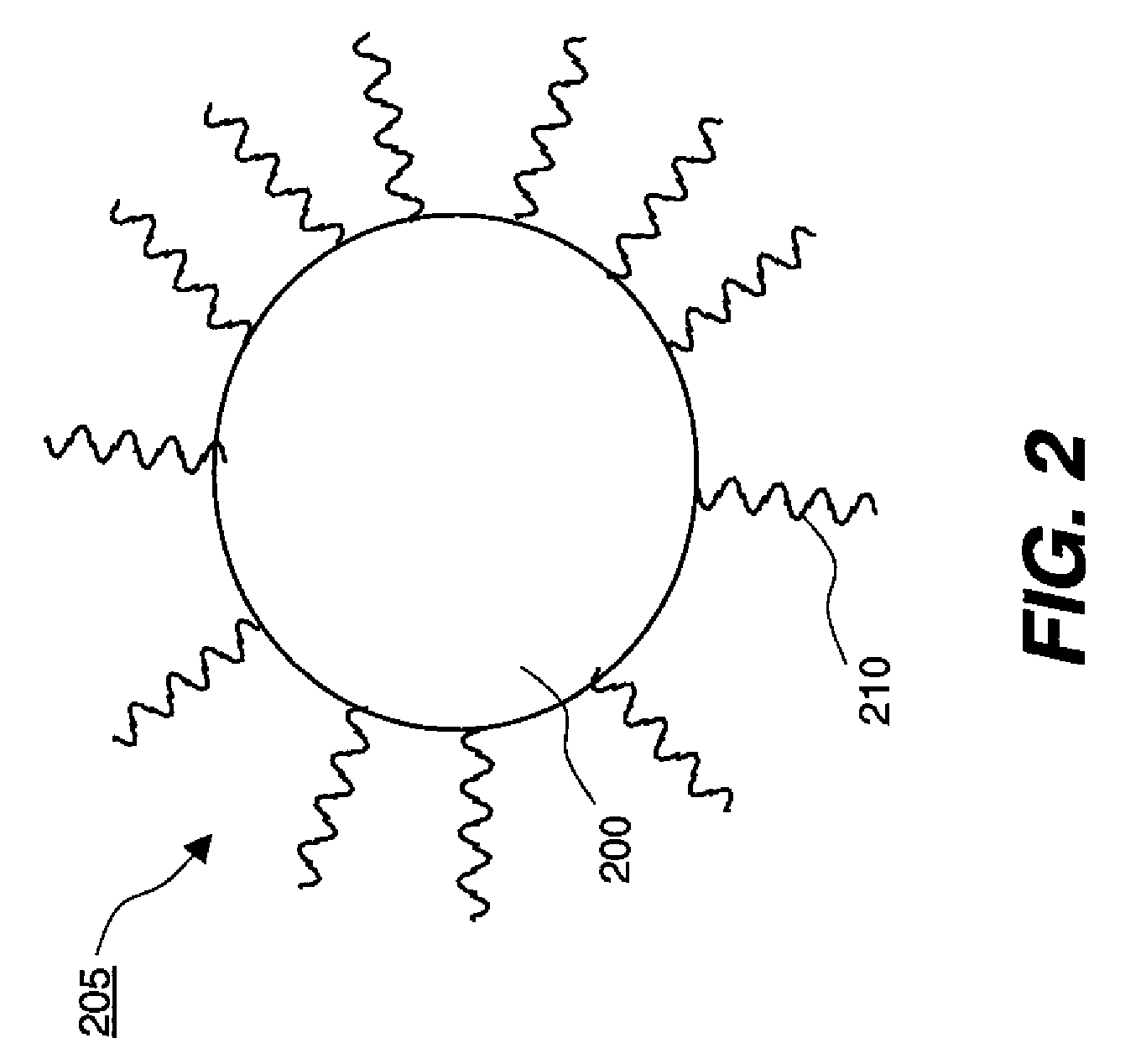Doped nanoparticle-based semiconductor junction
a semiconductor junction and nanoparticle technology, applied in the field of doped semiconductor junctions, can solve the problems of insufficient device performance for market needs, relatively high cost, and limited efficiency, and achieve the effects of low cost, low cost, and low cos
- Summary
- Abstract
- Description
- Claims
- Application Information
AI Technical Summary
Benefits of technology
Problems solved by technology
Method used
Image
Examples
example 1
[0053]In this example the doped semiconductor junction 500 was formed between a p-Si substrate and an n-CdSe layer in-situ doped with In. The p-Si substrate had a resistivity of ˜5 ohm-cm. Doped CdSe quantum wires 300 were formed by a procedure based on that by Pradhan et al. (N. Pradhan et al., Nano Letters 6, 720 (2006)) for forming undoped CdSe nanowires. In our version the cadmium precursor is cadmium acetate, the indium precursor is indium acetate hydrate, and the Se precursor is selenourea. In the synthesis equal molar (1.27×10−4 moles) amounts are used of the cadmium acetate and the selenourea. Experimentation revealed that the resistivity of the doped CdSe layer was lowest when the In molar concentration was 0.1% of the cadmium molar concentration. The coordinating solvent for the growth was octylamine (OA), which was degassed at 30° C. for 30 minutes prior to its usage.
[0054]To form the cadmium precursor, in a small vial inside of a dry box, 0.03 g of cadmium acetate was ad...
example 2
[0060]In this example the doped semiconductor junction 500 was formed between a p-ZnTe layer ex-situ doped with Cu and an n-Si substrate. The n-Si substrate had a resistivity of ˜5 ohm-cm. Undoped ZnTe semiconductor nanoparticles 410 were synthesized by adapting the procedures commonly used to form ZnSe spherical dots (M. A. Hines et al., J. Phys. Chem. B102, 3655 (1998)). More specifically, 4 g of dried and degassed hexadecylamine (HDA) was placed in a three-neck flask and heated, under argon, to 290° C. on a Schlenk line. For the Te precursor, a 0.25 M solution (called TOPTe) of Te in trioctylphosphine (TOP) was formed by heating under vacuum a mixture of Te powder and TOP at 190° C., while vigorously stirring for ˜3-4 hours. The resulting solution was clear and had a green-yellow appearance. In a dry box, a syringe was filled with 0.4 mmol of diethylzinc (from a 1 M diethylzinc in hexane solution), 1.6 mmol of TOPTe, and 2.0 ml of additional TOP. The syringe contents were quickly...
example 3
[0069]In the final example the doped semiconductor junction 500 was formed between a p-ZnTe layer ex-situ doped with Cu and an n-CdSe layer in-situ doped with In. For ease of contacting the n-CdSe, it was deposited on n-Si, instead of glass. Thus, the total diode structure was p-ZnTe:n-CdSe:n-Si. Both the Cu-doped ZnTe layer and the In-doped CdSe layer were formed using the same dispersions employed for Examples 2 and 1, respectively. Starting with 19 mm square n-Si pieces, analogous procedures (see Examples 1 and 2) were followed for applying Al metal to the n-Si backside and drop casting both nanoparticle-based dispersions. All of the drop castings were performed in a dry box in order to prevent oxide formation on the semiconductor surfaces. Prior to drop casting the mixed Cu and ZnTe dispersion on the n-CdSe film surface, the film surface was washed with acetone and methanol. After the In-doped n-CdSe film deposition, the diode was annealed as described in Example 1; after the Cu...
PUM
 Login to View More
Login to View More Abstract
Description
Claims
Application Information
 Login to View More
Login to View More - R&D
- Intellectual Property
- Life Sciences
- Materials
- Tech Scout
- Unparalleled Data Quality
- Higher Quality Content
- 60% Fewer Hallucinations
Browse by: Latest US Patents, China's latest patents, Technical Efficacy Thesaurus, Application Domain, Technology Topic, Popular Technical Reports.
© 2025 PatSnap. All rights reserved.Legal|Privacy policy|Modern Slavery Act Transparency Statement|Sitemap|About US| Contact US: help@patsnap.com



